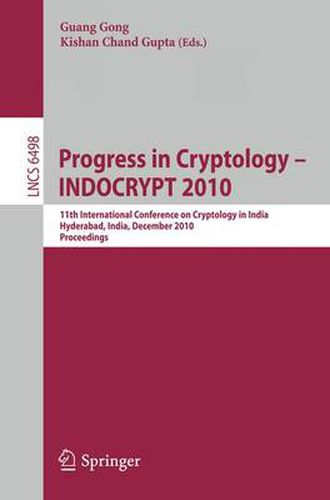Readings Newsletter
Become a Readings Member to make your shopping experience even easier.
Sign in or sign up for free!
You’re not far away from qualifying for FREE standard shipping within Australia
You’ve qualified for FREE standard shipping within Australia
The cart is loading…






Strong Pseudorandompermutations or SPRPs,which were introduced byLuby andRacko? [4], formalize the well established cryptographic notion ofblock ciphers.They provided a construction of SPRP, well known as LRconstruction, which was motivated by the structure of DES[6].The basicbuildingblock is the so called 2n-bit Feistel permutation (or LR round permutation) LR based F K on an n-bitpseudorandomfunction (PRF) F : K n LR (x ,x)=(F (x )?x ,x ),x ,x?{0,1} . F 1 2 K 1 2 1 1 2 K Theirconstruction consists (see Fig 1) offour rounds of Feistel permutations (or three rounds, for PRP), each round involves an application ofanindependent PRF(i.e.with independentrandomkeys K ,K ,K , and K ). More precisely, 1 2 3 4 LR and LR are PRP and SPRP respectively where K ,K ,K K ,K ,K ,K 1 2 3 1 2 3 4 LR := LR := LR (…(LR (*))…). K ,…,K F ,…,F F F 1 r K K K K r r 1 1 After this work, many results are known improvingperformance (reducingthe number of invocations of F )[5] and reducingthekey-sizes (i.e. reusingthe K roundkeys [7,8,10,12,11] orgenerate more keysfromsinglekey by usinga PRF[2]). However there are some limitations.Forexample,wecannotuseas few as single-keyLR (unless wetweak the roundpermutation) orasfew as two-roundsince they are not secure. Distinguishing attacks forsome other LR constructionsarealso known [8]. We list some oftheknow related results (see Table 1). Here all keys K ,K ,…are independently chosen.
$9.00 standard shipping within Australia
FREE standard shipping within Australia for orders over $100.00
Express & International shipping calculated at checkout
Strong Pseudorandompermutations or SPRPs,which were introduced byLuby andRacko? [4], formalize the well established cryptographic notion ofblock ciphers.They provided a construction of SPRP, well known as LRconstruction, which was motivated by the structure of DES[6].The basicbuildingblock is the so called 2n-bit Feistel permutation (or LR round permutation) LR based F K on an n-bitpseudorandomfunction (PRF) F : K n LR (x ,x)=(F (x )?x ,x ),x ,x?{0,1} . F 1 2 K 1 2 1 1 2 K Theirconstruction consists (see Fig 1) offour rounds of Feistel permutations (or three rounds, for PRP), each round involves an application ofanindependent PRF(i.e.with independentrandomkeys K ,K ,K , and K ). More precisely, 1 2 3 4 LR and LR are PRP and SPRP respectively where K ,K ,K K ,K ,K ,K 1 2 3 1 2 3 4 LR := LR := LR (…(LR (*))…). K ,…,K F ,…,F F F 1 r K K K K r r 1 1 After this work, many results are known improvingperformance (reducingthe number of invocations of F )[5] and reducingthekey-sizes (i.e. reusingthe K roundkeys [7,8,10,12,11] orgenerate more keysfromsinglekey by usinga PRF[2]). However there are some limitations.Forexample,wecannotuseas few as single-keyLR (unless wetweak the roundpermutation) orasfew as two-roundsince they are not secure. Distinguishing attacks forsome other LR constructionsarealso known [8]. We list some oftheknow related results (see Table 1). Here all keys K ,K ,…are independently chosen.